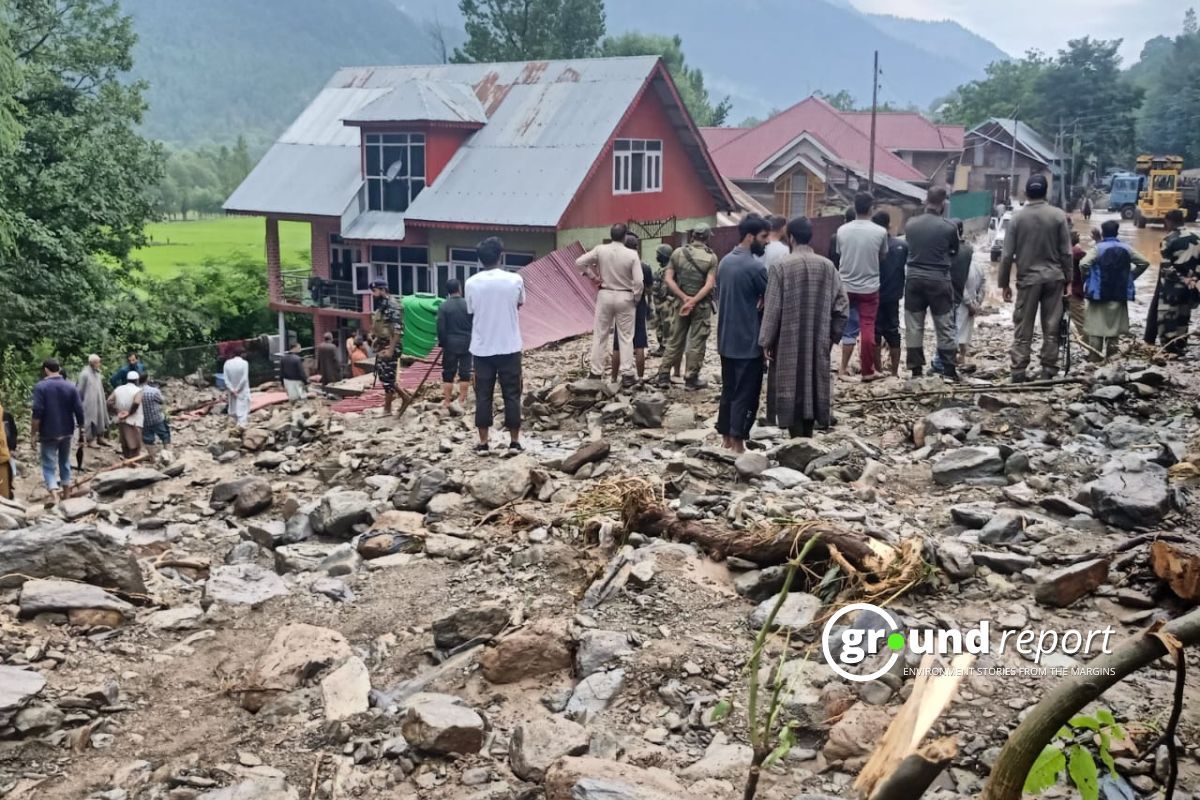On a rainy Wednesday, as heavy downpours swept across many districts in Madhya Pradesh, I made my way to a small village nestled by the Dhasan River in Chhatarpur district. Following a narrow lane that goes off road from Sagar-Tikamgarh highway is this village named Naya Khera in Guhwara sub-division.
“Who are you? Even the road hasn’t made its way to this place yet,” shouted a farmer from afar, looking at our four-wheeler car struggling on a muddy pathway.
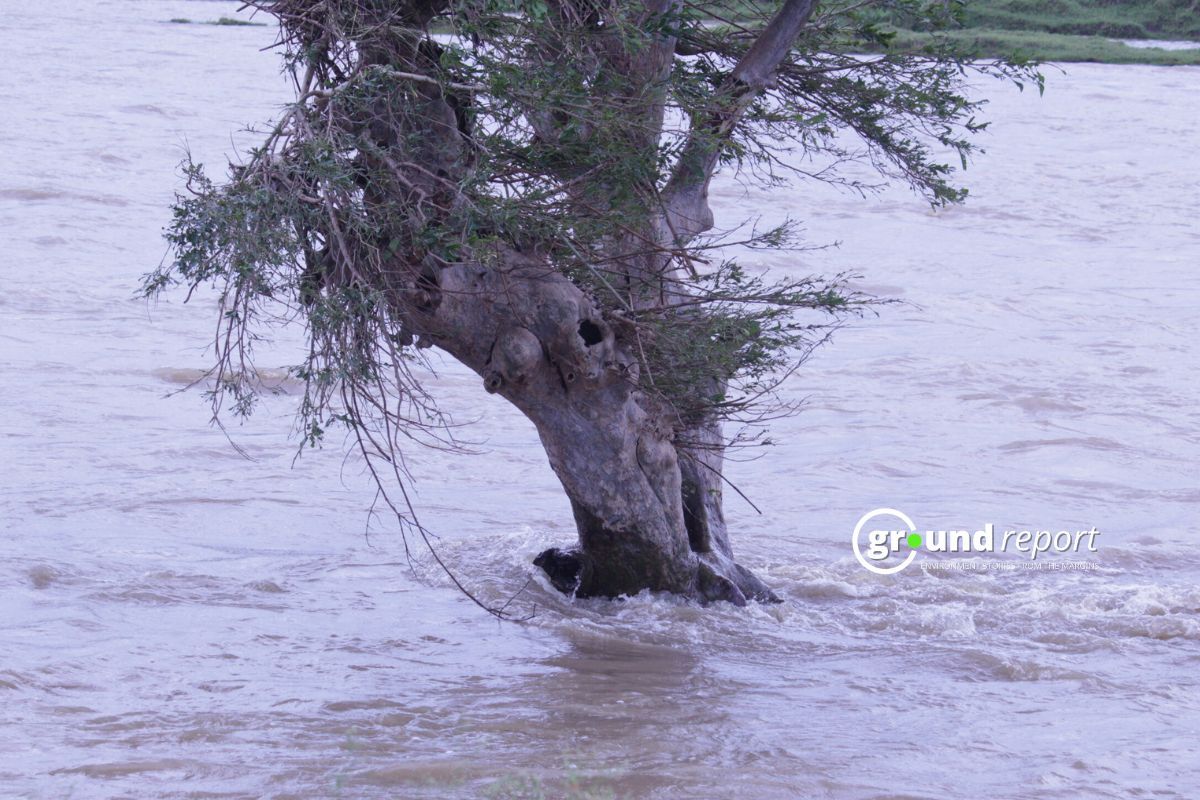
As I continued toward the village, I passed fields on either side, uprooted and devastated—moong, soybean, and sesame crops laid to waste by the recent heavy rainfall.
‘I lost a lakh over a night’
The meteorological department reports that a deep depression has formed over Odisha, intensifying over Chhattisgarh and nearby areas. This has resulted in heavy rainfall, which persisted for around 24 hours in many areas.
When I was traveling across Guhwara in Chhatarpur, in the nearby district of Tikamgarh, two farmers were stranded on an island in the Dhasan River, unable to be rescued because of the river’s swift currents. The district collector urgently requested help from the army to save them. Meanwhile, in a heartening development, two pregnant women were safely evacuated from the flood-affected regions of Nilagodri, Kiranpur (Balaghat), and Kandri Kala in Lanji, ensuring their safety during this difficult time.
On the other side of the Dhasan River, where I was, the farmers were experiencing difficulties to protect their crops amidst the heavy rains. Jashraj Kumar, a 70-year old farmer owns a 5 acre of land where he had sown moong, soybean and sesame for this Kharif season.
With complete hopelessness, he informed me, “I lost a lakh over a night.”

Jashraj shared how the farmers of his village were unable to go up to their fields with water filled over across the route. He then took me to his fields across the Dhasan River with the majority of the crops lying dead.
“Madam, I cried yesterday looking at this dead crop field. It is a huge loss. I think I can only extract some money from the remaining sesame field,” he told me.
The farmers in the village explained that many of them don’t own tractors and must rent them along with a driver to work their fields. One farmer shared, ‘I have to spend Rs.1000 per hour just to rent the tractor and the driver.’
Many farmers in the village also rely on informal loans and rental lands for agriculture which adds a significant burden to their already challenging work.
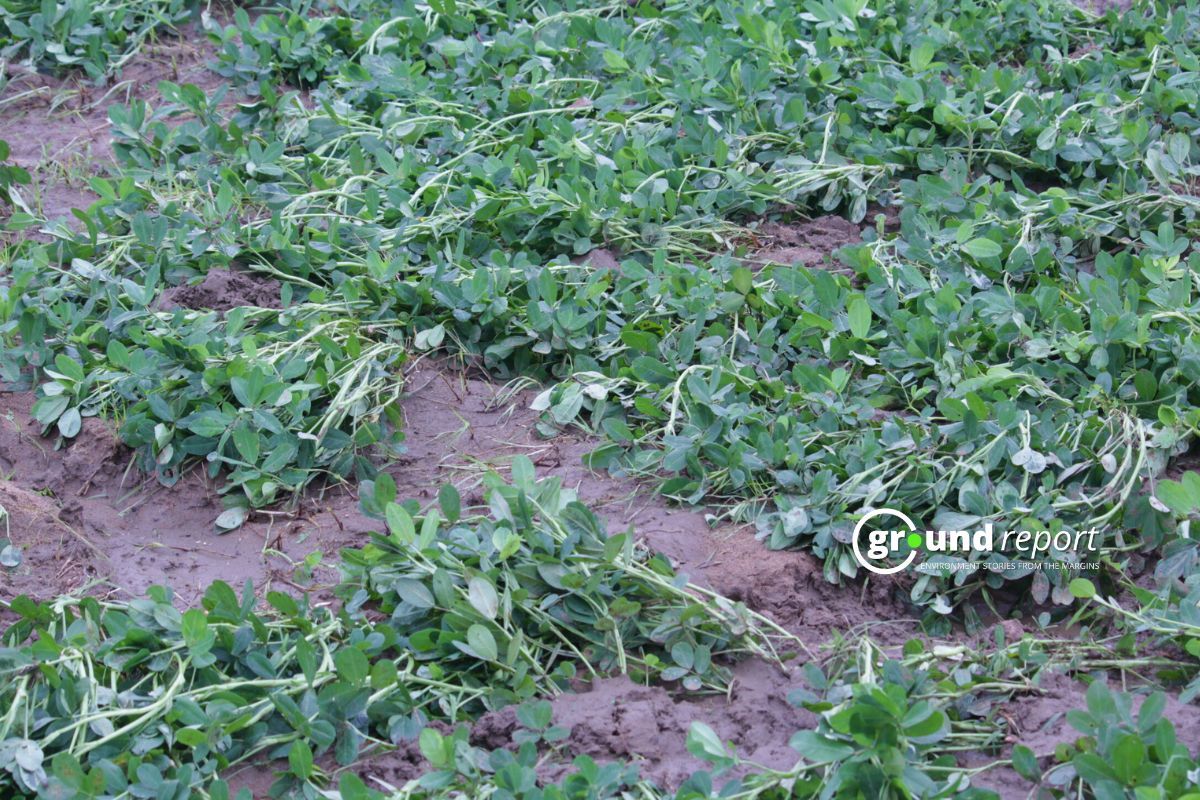
Impacts of Climate Change
The annual average crop losses caused by extreme weather events are estimated to amount to approximately 0.25 percent of India’s GDP. According to data from the Ministry of Agriculture presented during the 2022 monsoon session of Parliament, hydro-meteorological disasters, such as heavy rainfall and flooding, have affected 33.9 million hectares of India’s agricultural land between 2015-16 and 2021-22.
Madhya Pradesh experienced the most significant impact of crop losses this year among all states. While it had zero crop loss in both 2017 and 2018, it faced the highest crop loss in 2019, with 6.047 million hectares affected due to extreme rainfall, as shared by Union Minister of State for Jal Shakti, Rattan Lal Kataria. Additionally, in early 2024, farmers in Madhya Pradesh were struck by hailstorms in February and March, which damaged their crops and created difficulties in securing compensation.
“Previously, weather seasons were more predictable, but now it’s hard to know what to expect next—whether it will be heavy rainfall or extreme droughts. This unpredictability makes it challenging for us to plan and adapt,” added Jasraj.
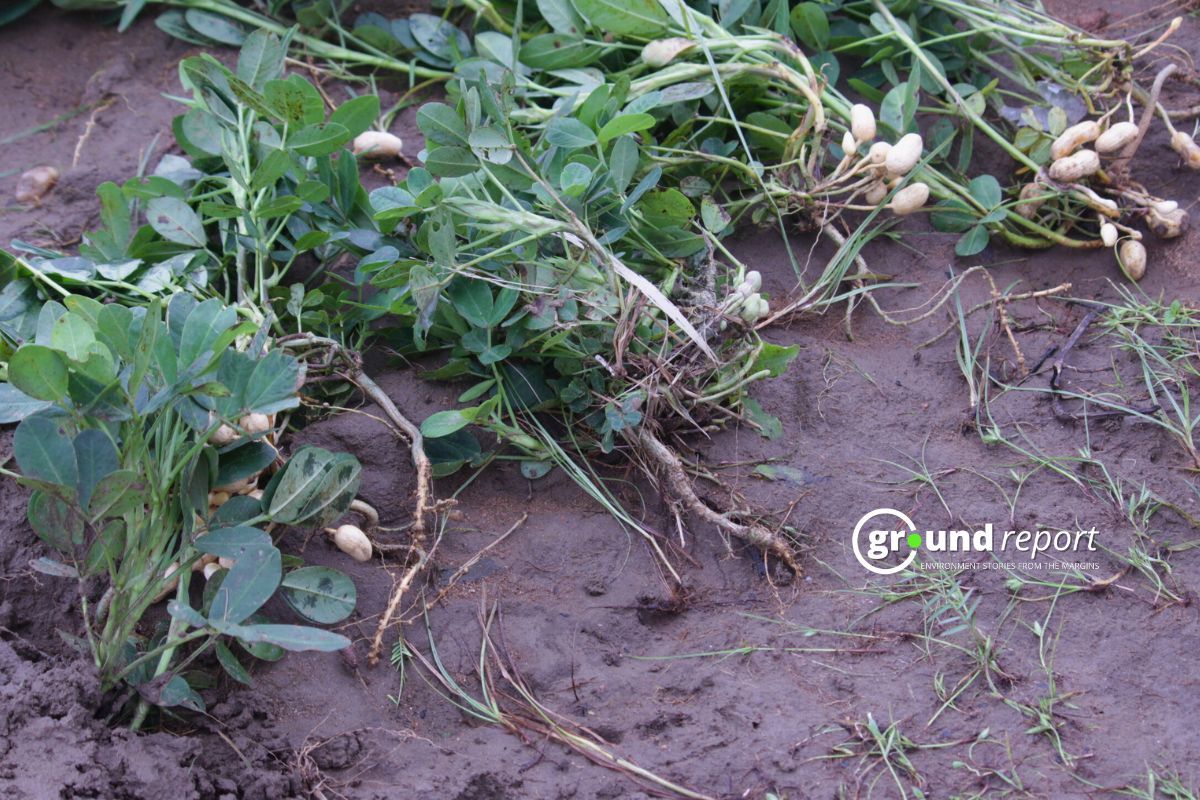
The International Food Policy Research Institute’s (IFPRI) Global Food Policy 2022 report has issued a warning that climate change could drive 90 million Indians towards hunger by 2030. The report highlights a potential decline in agricultural production and disruptions in the food supply chain as key factors contributing to this looming crisis.
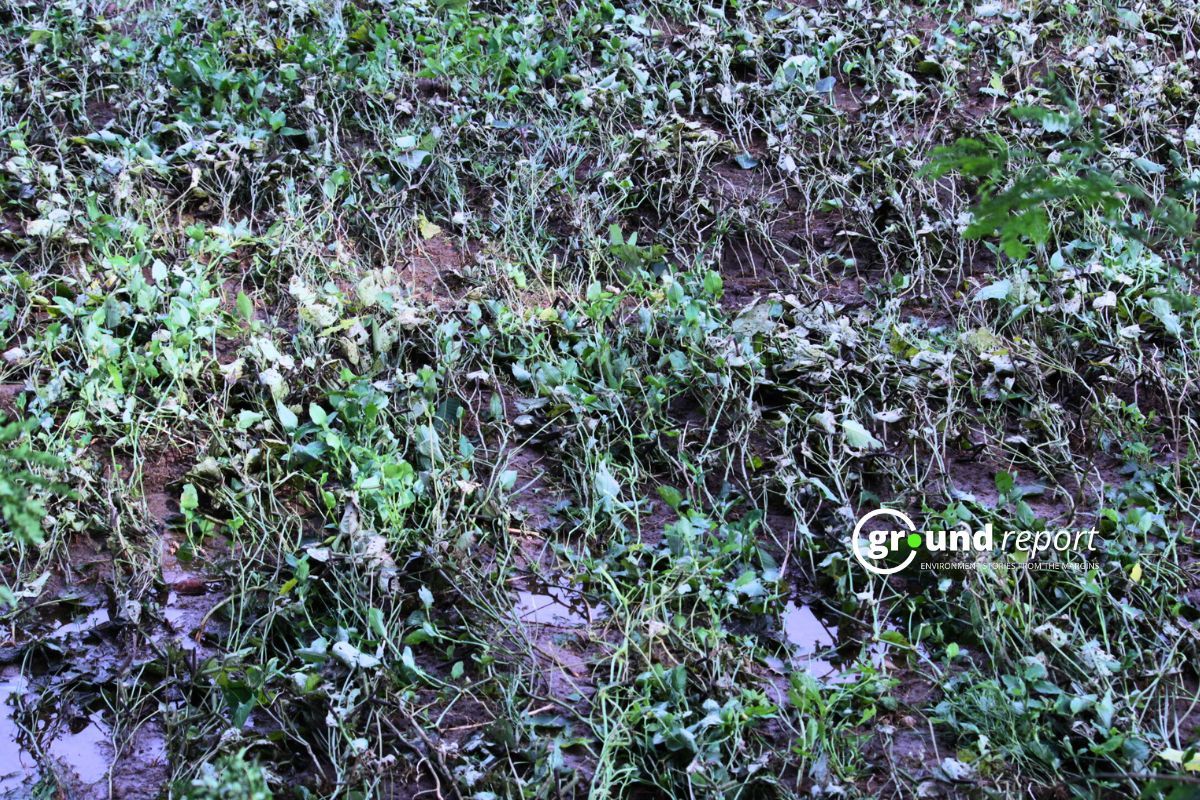
An alternative job is the only option
As the farmers in the village assessed their damaged crops, they were also contemplating the alternative work they would need to find to make ends meet. Dhani Ram, whose name means “wealthy man,” is ironically struggling with debt and is now forced to seek work to cover the rent for the two acres of land he has leased for cultivation over the past year.
“I have to pay the lease of Rs. 20,000 for six months. My moong fields are severely damaged. You see! It looks like somebody has butchered the entire area,” Dhani Ram said.
He believes with constant climate change and extreme weather impacts the farmers are compelled to look for alternate work.
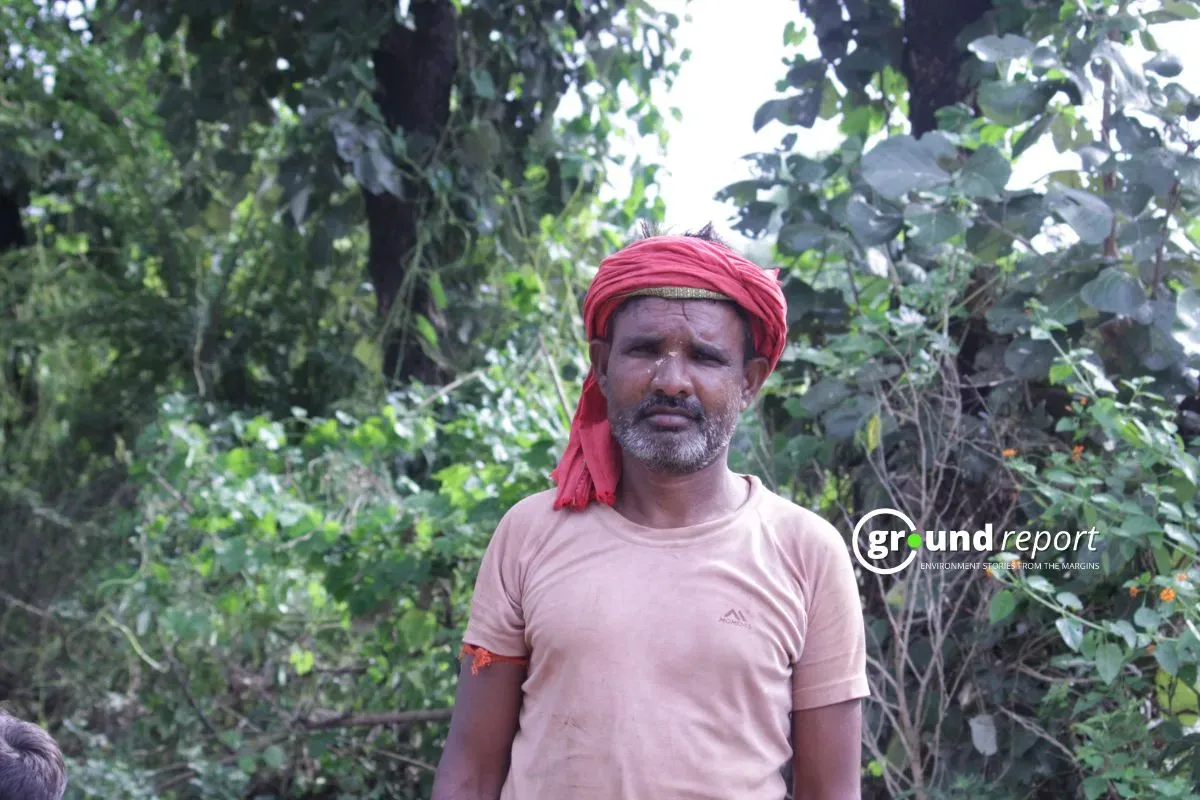
“Now I might have to travel to a city looking for work as a labourer to earn a living for my family. My sons have already left farming and work at construction sites in different cities,” he added.
Nandlal, another farmer from the village, tends to the four acres of land passed down through generations. Like Dhani Ram and Jashraj, he planted moong and sesame in this Kharif season. Yet, he estimates his losses this year to be around Rs. 50,000.
“This is our ancestral land. We’ve never left this district in our lifetime,” he says. “But in recent years, our children are being forced to move to cities and work as laborers.”
Nandlal’s story is part of a growing trend in rural India, where farmers are increasingly struggling to sustain their livelihoods. One of the major reasons for this shift is climate change. Unpredictable weather patterns, frequent droughts, erratic rainfall, and rising temperatures have made farming a risky venture. Prolonged dry spells followed by sudden heavy rains can destroy crops, leaving farmers like Nandlal with mounting debts and unsustainable losses.
According to a recent National Sample Survey Office report on the state of farmers, 40 percent of farmers expressed that they would consider leaving agriculture if they were offered viable alternative employment opportunities.
The plight of these farmers also depict some of the many reasons why farmers live in fear and still with limited access to resources to cultivate their lands and earn from the primary sector.
The difficulties experienced by these farmers illustrate some of the many reasons why they live in constant worry. They often face significant obstacles, such as limited access to resources and support, which makes it challenging for them to cultivate their lands effectively and sustain their livelihoods from farmingAltogether, the farmers are worried with a hope to receive compensation for their crop losses and earn enough to survive through the year.
Support us to keep independent environmental journalism alive in India.
Follow Ground Report on X, Instagram and Facebook for environmental and underreported stories from the margins. Give us feedback on our email id greport2018@gmail.com.
Don’t forget to Subscribe to our weekly newsletter, Join our community on WhatsApp, Follow our Youtube Channel for video stories.
Keep Reading
Changing weather pattern impacts soybean crops in Dewas region of MP
Unpredictable weather leaves farmers helpless in Jhansi and Chhatarpur
What is yellow mosaic disease increasing troubles of soybean farmers in MP?







